Abstract
Pump-and-probe techniques can be used to follow the slow rotational motions of fluorescent labels bound to macromolecules in solution. A strong pulse of polarized light initially anisotropically depletes the ground-state population. A continuous low-intensity beam of variable polarization then probes the anisotropic ground-state distribution. Using an additional emission polarizer, the generated fluorescence can be recorded as it rises towards its prepump value. A general theory of fluorescence recovery spectroscopy (FRS) is presented that allows for irreversible depletion processes like photobleaching as well as slowly reversible processes like triplet formation. In either case, rotational motions modulate recovery through cosine-squared laws for dipolar absorption and emission processes. Certain pump, probe, and emission polarization directions eliminate the directional dependence of either dipole and simplify the resulting expressions. Two anisotropy functions can then be constructed to independently monitor the rotations of either dipole. These functions are identical in form to the anisotropy used in fluorescence depolarization measurements and all rotational models developed there apply here with minor modifications. Several setups are discussed that achieve the necessary polarization alignments. These include right-angle detection equipment that is commonly available in laboratories using fluorescence methods.
Full text
PDF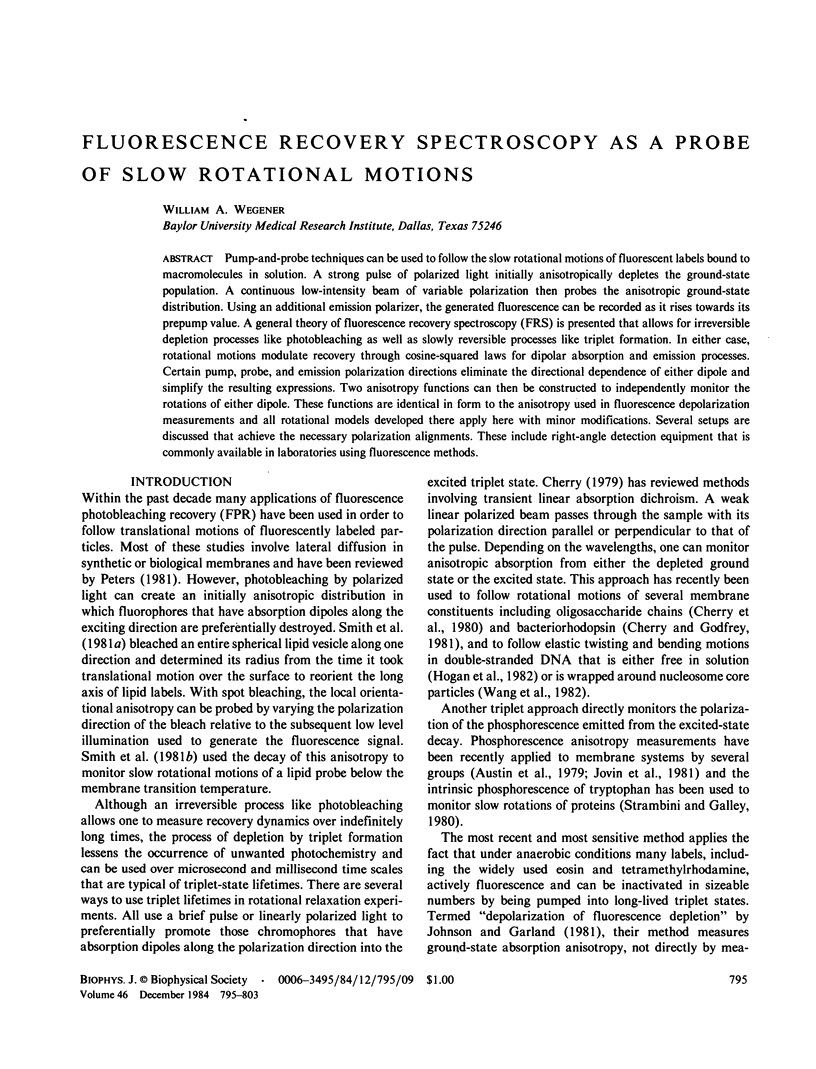


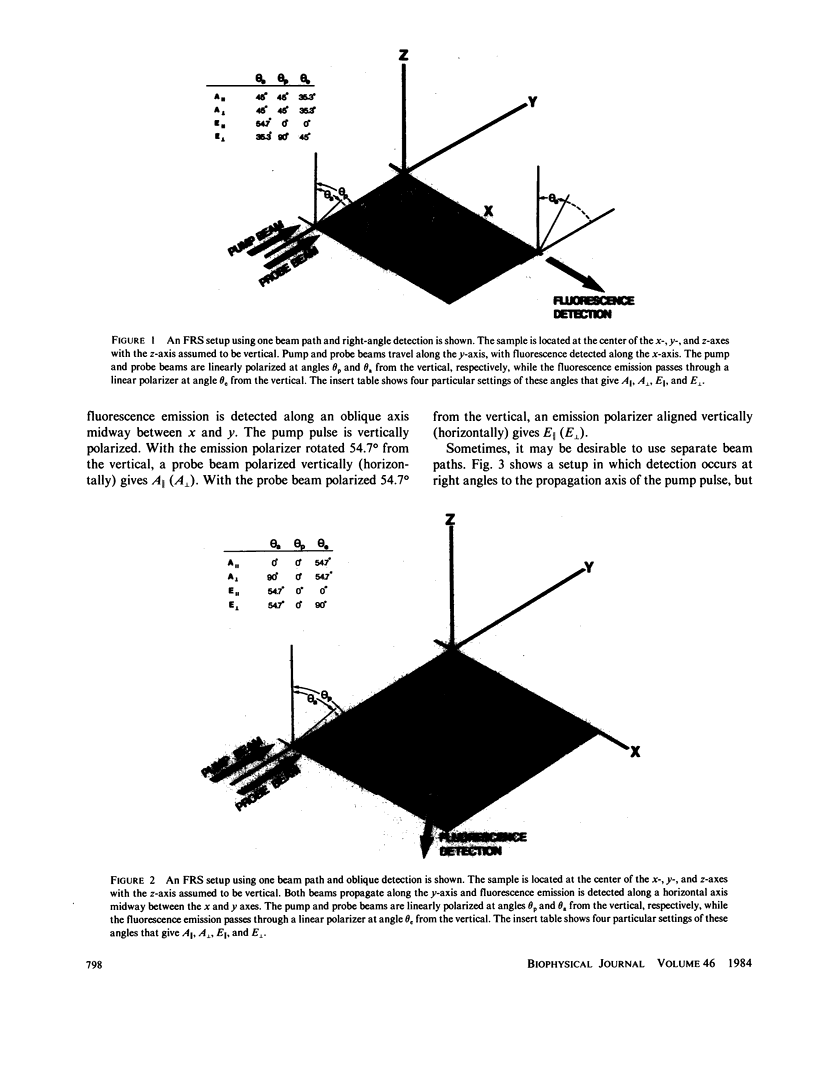

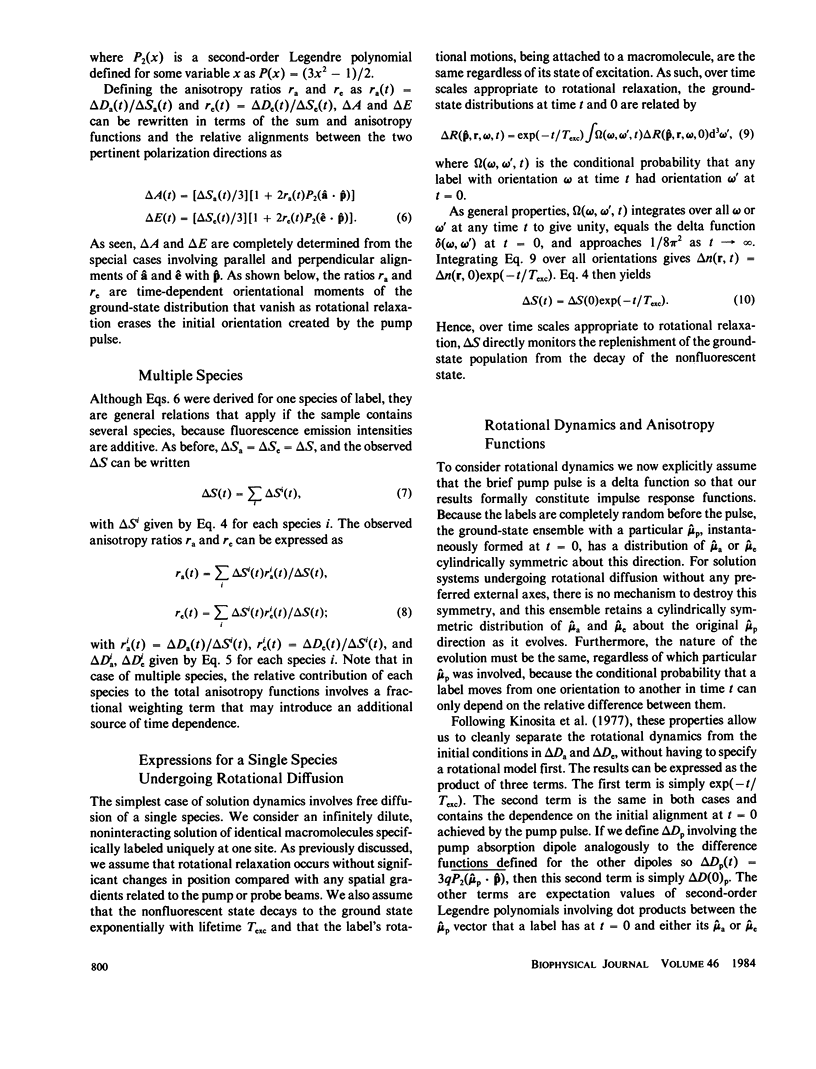
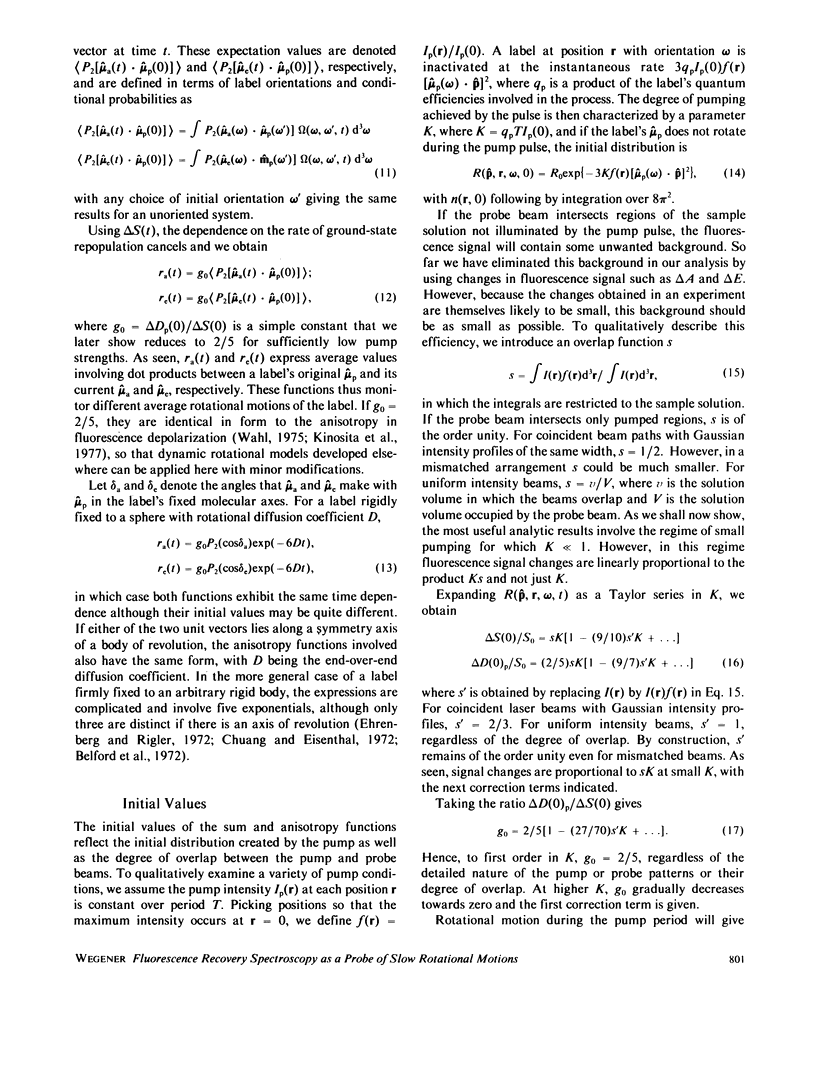
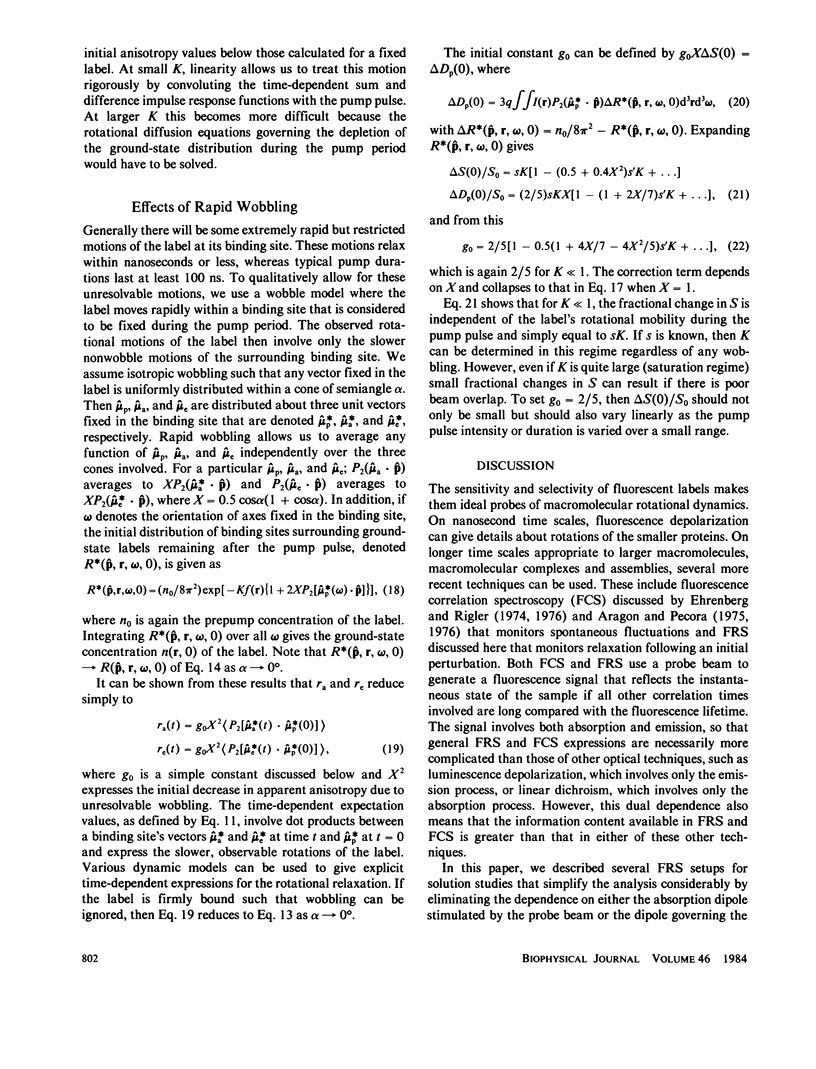

Images in this article
Selected References
These references are in PubMed. This may not be the complete list of references from this article.
- Austin R. H., Chan S. S., Jovin T. M. Rotational diffusion of cell surface components by time-resolved phosphorescence anisotropy. Proc Natl Acad Sci U S A. 1979 Nov;76(11):5650–5654. doi: 10.1073/pnas.76.11.5650. [DOI] [PMC free article] [PubMed] [Google Scholar]
- Belford G. G., Belford R. L., Weber G. Dynamics of fluorescence polarization in macromolecules. Proc Natl Acad Sci U S A. 1972 Jun;69(6):1392–1393. doi: 10.1073/pnas.69.6.1392. [DOI] [PMC free article] [PubMed] [Google Scholar]
- Cherry R. J., Godfrey R. E. Anisotropic rotation of bacteriorhodopsin in lipid membranes. Comparison of theory with experiment. Biophys J. 1981 Oct;36(1):257–276. doi: 10.1016/S0006-3495(81)84727-3. [DOI] [PMC free article] [PubMed] [Google Scholar]
- Cherry R. J., Nigg E. A., Beddard G. S. Oligosaccharide motion in erythrocyte membranes investigated by picosecond fluorescence polarization and microsecond dichroism of an optical probe. Proc Natl Acad Sci U S A. 1980 Oct;77(10):5899–5903. doi: 10.1073/pnas.77.10.5899. [DOI] [PMC free article] [PubMed] [Google Scholar]
- Cherry R. J. Rotational and lateral diffusion of membrane proteins. Biochim Biophys Acta. 1979 Dec 20;559(4):289–327. doi: 10.1016/0304-4157(79)90009-1. [DOI] [PubMed] [Google Scholar]
- Ehrenberg M., Rigler R. Fluorescence correlation spectroscopy applied to rotational diffusion of macromolecules. Q Rev Biophys. 1976 Feb;9(1):69–81. doi: 10.1017/s003358350000216x. [DOI] [PubMed] [Google Scholar]
- Hogan M., Wang J., Austin R. H., Monitto C. L., Hershkowitz S. Molecular motion of DNA as measured by triplet anisotropy decay. Proc Natl Acad Sci U S A. 1982 Jun;79(11):3518–3522. doi: 10.1073/pnas.79.11.3518. [DOI] [PMC free article] [PubMed] [Google Scholar]
- Johnson P., Garland P. B. Depolarization of fluorescence depletion. A microscopic method for measuring rotational diffusion of membrane proteins on the surface of a single cell. FEBS Lett. 1981 Sep 28;132(2):252–256. doi: 10.1016/0014-5793(81)81172-6. [DOI] [PubMed] [Google Scholar]
- Jovin T. M., Bartholdi M., Vaz W. L., Austin R. H. Rotational diffusion of biological macromolecules by time-resolved delayed luminescence (phosphorescence, fluorescence) anisotropy. Ann N Y Acad Sci. 1981;366:176–196. doi: 10.1111/j.1749-6632.1981.tb20753.x. [DOI] [PubMed] [Google Scholar]
- Kinosita K., Jr, Kawato S., Ikegami A. A theory of fluorescence polarization decay in membranes. Biophys J. 1977 Dec;20(3):289–305. doi: 10.1016/S0006-3495(77)85550-1. [DOI] [PMC free article] [PubMed] [Google Scholar]
- Peters R. Translational diffusion in the plasma membrane of single cells as studied by fluorescence microphotolysis. Cell Biol Int Rep. 1981 Aug;5(8):733–760. doi: 10.1016/0309-1651(81)90231-9. [DOI] [PubMed] [Google Scholar]
- Smith L. M., McConnell H. M., Smith Baron A., Parce J. W. Pattern photobleaching of fluorescent lipid vesicles using polarized laser light. Biophys J. 1981 Jan;33(1):139–146. doi: 10.1016/S0006-3495(81)84877-1. [DOI] [PMC free article] [PubMed] [Google Scholar]
- Wang J., Hogan M., Austin R. H. DNA motions in the nucleosome core particle. Proc Natl Acad Sci U S A. 1982 Oct;79(19):5896–5900. doi: 10.1073/pnas.79.19.5896. [DOI] [PMC free article] [PubMed] [Google Scholar]
- Wegener W. A., Rigler R. Separation of translational and rotational contributions in solution studies using fluorescence photobleaching recovery. Biophys J. 1984 Dec;46(6):787–793. doi: 10.1016/S0006-3495(84)84077-1. [DOI] [PMC free article] [PubMed] [Google Scholar]





